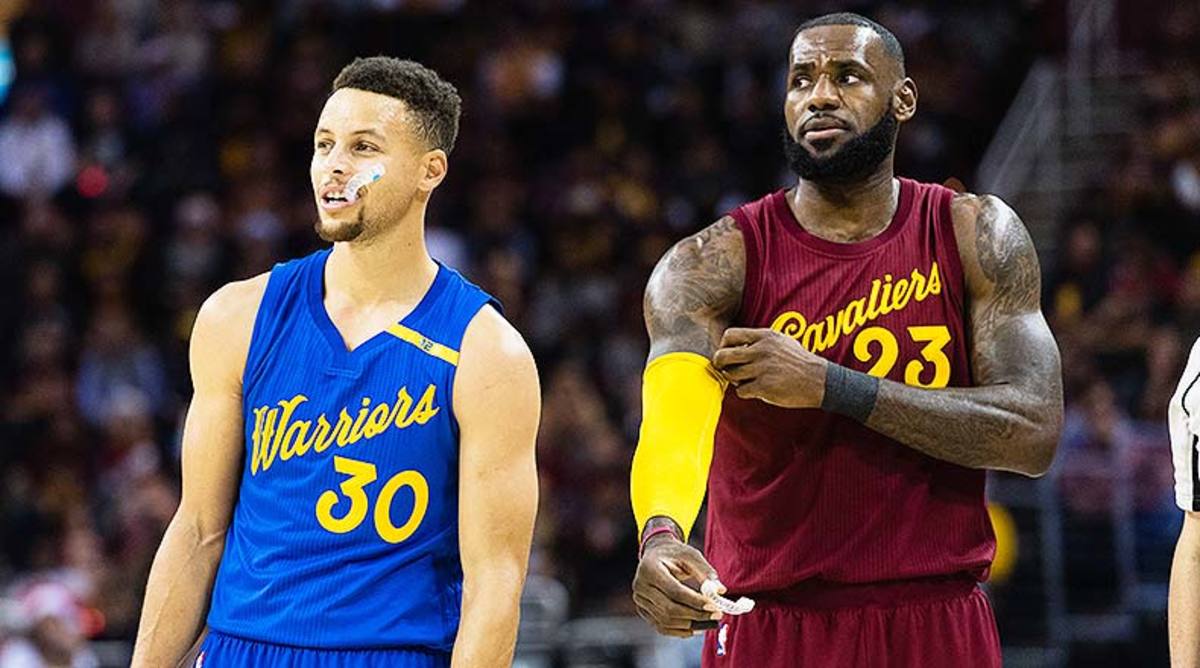The clash between the Cleveland Cavaliers and the Golden State Warriors has been one of the most iconic rivalries in modern NBA history. Every time these two teams meet on the court, fans are treated to a display of athleticism, strategy, and individual brilliance. Beyond the final score, the player stats tell a deeper story of how the game unfolded, highlighting key contributions, shooting efficiency, defensive efforts, and the overall impact each star brought to the hardwood.
Overview of the Match
When the Cleveland Cavaliers face off against the Golden State Warriors, it’s not just about team performance but also about the matchup between key players. Historically, these games have featured some of the biggest names in basketball, including LeBron James, Stephen Curry, Klay Thompson, Draymond Green, and past Cavaliers like Kyrie Irving and Kevin Love.
In the latest match, the Cavaliers aimed to challenge the Warriors’ offensive firepower with solid defensive tactics and an aggressive inside game. Meanwhile, the Warriors leaned on their trademark ball movement, three-point shooting, and fast-paced offense to outmaneuver Cleveland. The stats from this match showcase which players rose to the occasion, who struggled under pressure, and how the momentum shifted over the course of four quarters.
Cleveland Cavaliers Player Performances
LeBron James, as expected, was the heartbeat of the Cavaliers’ performance. He recorded a near triple-double, with his points, rebounds, and assists reflecting his ability to impact all facets of the game. His shooting percentage was efficient, especially in the paint where his physicality overpowered defenders. LeBron’s defensive stats, including steals and blocks, showed his commitment to stopping Golden State’s perimeter threats, although containing players like Curry and Thompson is always a challenge.
Darius Garland played a significant role as the Cavaliers’ floor general. His assists numbers underscored his court vision, finding open teammates and setting up plays. He contributed meaningful points, particularly from mid-range jumpers and drives to the basket. However, his turnovers revealed the Warriors’ defensive pressure, which often forced rushed decisions.
Evan Mobley stood out defensively with his presence in the paint. His rebounding numbers were solid, helping Cleveland control second-chance opportunities. Mobley’s blocks and altered shots provided some relief against Golden State’s cutting and slashing offense. On the offensive side, Mobley’s points came mainly from put-backs and inside finishes, though his free throw percentage showed room for improvement.
Jarrett Allen contributed with strong rebounding and inside defense, using his size to challenge shots and grab crucial boards. Offensively, he capitalized on pick-and-roll plays and offensive rebounds. His field goal percentage reflected high efficiency, mostly from close-range attempts, although his limited shooting range was noticeable compared to more versatile big men.
Golden State Warriors Player Performances
Stephen Curry once again put on a shooting clinic. His three-point percentage was impressive, with several deep-range shots that ignited the Warriors’ offense and energized the crowd. Curry’s assist numbers demonstrated his dual-threat nature, as he created opportunities for teammates when defenders overcommitted. His ball-handling and movement off the ball caused problems for the Cavaliers’ defense, forcing constant switches and rotations.
Klay Thompson complemented Curry with his signature catch-and-shoot ability. His field goal and three-point percentages were solid, and he delivered timely baskets that stopped Cleveland’s runs. While Thompson’s rebounding and assist stats were modest, his primary value came as a reliable scorer and defensive presence on the perimeter.
Draymond Green’s impact, as usual, went beyond the stat sheet. His assist numbers reflected his role as a playmaker, often initiating offensive sets from the top of the key. Green’s rebounds and defensive stats highlighted his versatility, guarding multiple positions and anchoring Golden State’s defensive schemes. He contributed a few points, mainly from opportunistic plays near the basket, but his leadership and energy were central to the Warriors’ success.
Andrew Wiggins played a key role on both ends of the floor. Offensively, his points came from slashing to the basket and mid-range jumpers, while defensively, he was tasked with guarding Cleveland’s top scorers. His rebounds, particularly on the defensive end, helped limit Cleveland’s second-chance points. Wiggins’ steals and deflections underscored his defensive instincts and his importance in disrupting Cleveland’s flow.
Comparing Key Matchups
The matchup between LeBron James and Andrew Wiggins was one to watch, with Wiggins tasked with slowing down the Cavaliers’ leader. Although Wiggins held his own defensively, LeBron’s all-around game proved difficult to contain, as shown in his scoring and playmaking numbers. However, Wiggins’ contributions on offense helped offset some of LeBron’s impact.
In the backcourt, Stephen Curry and Darius Garland squared off as two dynamic point guards. Curry’s scoring efficiency, particularly from beyond the arc, gave him the edge, but Garland’s assist numbers and ability to penetrate the defense were crucial for Cleveland. Turnovers and defensive adjustments played a key role in determining which guard dictated the pace.
Inside, Evan Mobley and Jarrett Allen battled Draymond Green and Kevon Looney. While Cleveland’s big men had the size advantage, Golden State’s bigs offered better floor spacing and passing. The rebounding battle was close, and the second-chance points derived from these matchups became a critical factor in the outcome.
How Player Stats Influenced the Game
Looking at the stat sheet, it becomes clear that shooting efficiency, especially from three-point range, gave the Warriors a significant advantage. Golden State’s team three-point percentage was notably higher, reflecting their reputation as a perimeter-oriented team. Cleveland, on the other hand, excelled in points in the paint, capitalizing on their physical advantage inside.
Turnovers were another critical statistic. The Cavaliers struggled under the Warriors’ defensive pressure, resulting in more turnovers that Golden State often converted into fast-break points. Assist numbers also highlighted the Warriors’ fluid offense, with multiple players recording several assists, showing the importance of ball movement in creating open shots.
Defensive stats such as steals, blocks, and rebounds revealed how each team adjusted throughout the game. Cleveland’s interior defense generated blocks and forced misses, while Golden State’s perimeter defense produced key steals and disrupted passing lanes. The balance between these defensive efforts shaped the game’s momentum.
Final Reflections on the Match
The player stats from the Cleveland Cavaliers vs Golden State Warriors match illustrate not just individual performances but how each player contributed to the larger team dynamic. LeBron James’ near triple-double anchored Cleveland’s efforts, but the combined firepower of Curry, Thompson, and Green ultimately proved too much. The Warriors’ shooting accuracy, disciplined ball movement, and defensive versatility were decisive in securing the win.


